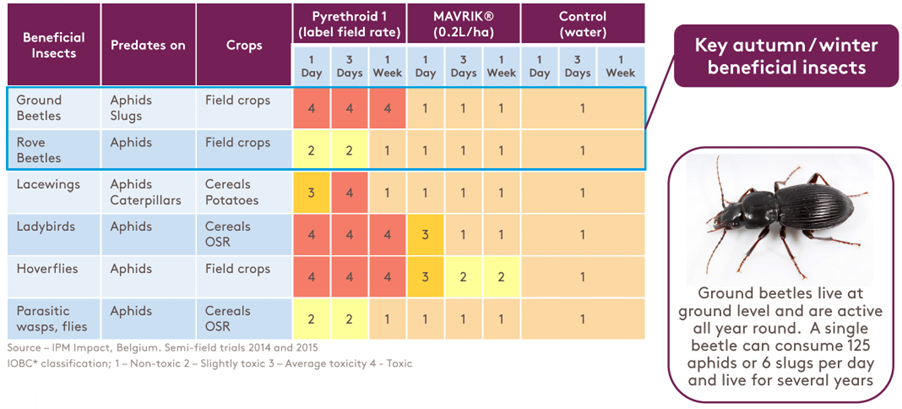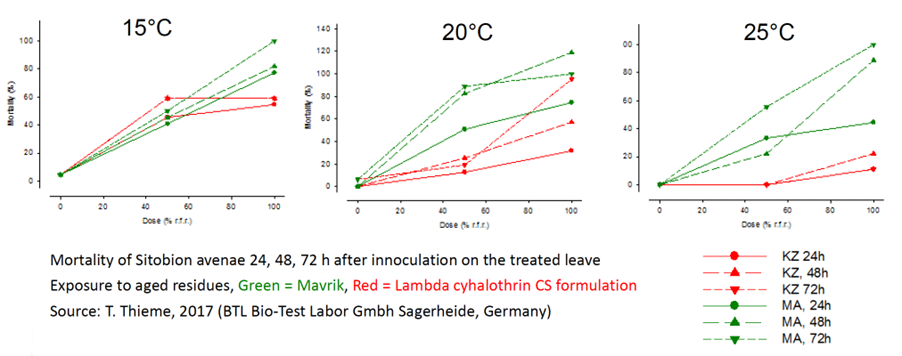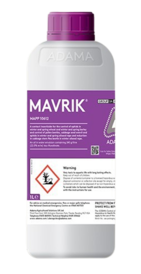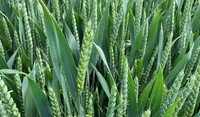
Unseasonably warm weather prompts cereal aphid warning

BYDV can be transmitted by three main species of aphid, two of which (Bird Cherry Aphid and Grain Aphid) pose a serious risk to UK cereal crops. The higher than typical temperatures experienced in many parts of the UK throughout September and into October have stimulated new migrations of both species, significantly elevating the risk of BYDV being transmitted into new crops.
Growers must therefore be vigilant of the threat and, where aphid populations have exceeded threshold, ensure crops are protected with an appropriate insecticide which is capable of providing good levels of efficacy in these high temperatures.
While MAVRIK ® (tau-fluvalinate 240 g/L) is used less frequently than other pyrethroid insecticides at this autumn timing, new research shows that it provides better control of cereal aphids when the mercury rises. It also has the added advantage of being less acutely toxic to many beneficial insects such as honeybees and ground beetles.
Better for beneficials
Where cereal aphids are active and have reached the threshold to necessitate the application of an insecticide, it is preferable to use a pesticide with a lower residual impact on beneficial organisms including advantageous predators: if a pyrethroid-based insecticide is deemed to be the most appropriate mode of action, MAVRIK (240 g/litre tau-fluvalinate) is the ideal choice as it not only provides fast-acting contact control, but has also been proven to have a lower residual impact on many beneficial insects compared to other pyrethroids.
This reduced toxicity enables natural predators to recover more quickly after crops have been sprayed, therefore ensuring there’s a strong population of predators ready and able to overcome any subsequent infestations.

*IOBC: International Organisation of Biological Control/WRPS Working Group Pesticides and Beneficial Organisms
Works in warmer weather
Trials carried out in Germany also indicate that, at temperatures of 15°C and above, MAVRIK is more effective versus cereal aphids than lambda cyhalothrin CS, giving better results in terms of rapidity of knockdown and ultimate mortality. This improved activity at higher temperatures is the result of the spatial shape and chemical composition of tau-fluvalinate (a Type I pyrethroid) which makes it more stable and therefore more effective at higher temperatures compared to Type II pyrethroids such as lambda cyhalothrin. This inherent stability also makes tau-fluvalinate less susceptible to metabolic resistance within target organisms.
Controlled temperature work found that MAVRIK is more effective against grain aphids at temperatures of 15oC and above

In France, the use of an autumn-applied insecticide is much more common, with MAVRIK commonly applied twice at 0.15L/ha to prevent the spread of BYDV. In UK trials to compare application rates of 0.15L/ha and 0.2L/ha, no significant difference was found in terms of efficacy against cereal aphids at 7 days after application. However, aphid mortality was slightly reduced at 14 days after application when applied at the lower dose. Click on the bottle below for more information about MAVRIK and to find out how it can help to control aphids in cereals.
MAVRIK: tau-fluvalinate 240 g/l
MAVRIK is a fast-acting contact insecticide for the control of aphids in cereals

- Less acute toxicity to honey bees than other pyrethroids when used in accordance with the label and best practice advice
- Delivers good efficacy against the key aphid vectors of BYDV Rhopalosiphum padi and Sitobion avenae
- Suitable for use in conjunction with BYDV prediction tools (e.g. AHDB’s 170 DD model)
- A second application can be made if cereal aphid migration continues


